Features and composition of tombak
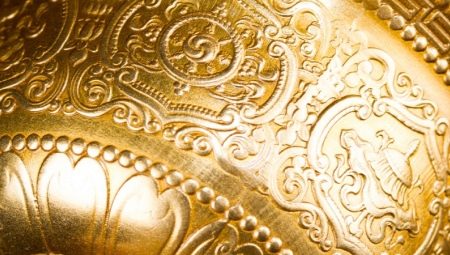
Beautiful as gold, but at times cheaper. A type of brass that is used everywhere, but very few people know. Few can guess what this is about tombake - surprising in its properties and characteristics of the metal. It is about him, about its characteristics, areas of application and methods of production that will be discussed in this article.
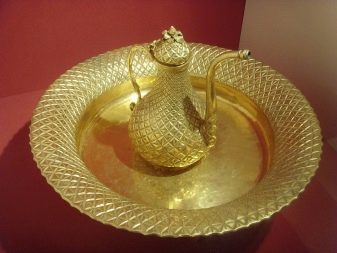

What it is?
Red brass - This is one of the many varieties of brass, in which zinc and copper are combined in a certain proportion. Comparison of this metal with gold is based only on external similarity, since in terms of chemical composition, characteristics and other features, these two metals are completely different. Although brass has been known to mankind for a long time, but tombak was first talked about only in the eighteenth century - after the discovery by Christopher Pinchbecker. At that time, a similar alloy was actively used in England. And only after a couple of decades, its popularity spread to other countries.
Many dishonest people were able to make good money on the similarity of tombak with a jewelry mineral, passing off coins and jewelry made of a brass alloy for real ones made of gold.
The metal in question can be called similor, princetal, chrysorin, chrysochalk, oreid. When you hear these names, do not be surprised - they are all the same metal.
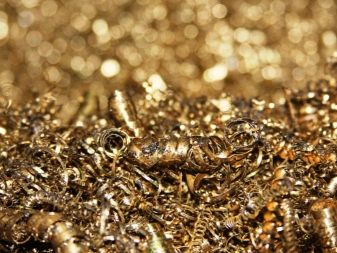
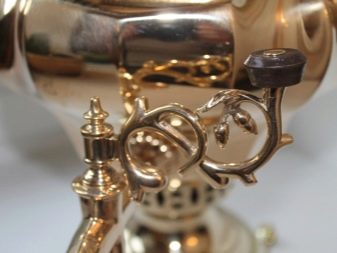
The tombak has many advantages:
- good resistance to the formation of corrosion damage;
- excellent wear resistance;
- good weldability with other metals;
- plasticity is sufficient for applying deformation and engraving methods;
- the possibility of enameling and gilding;
- immunity to magnets.
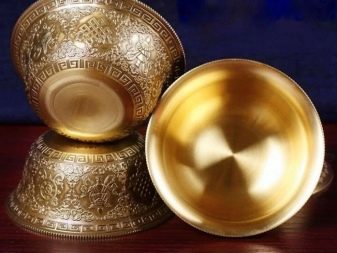
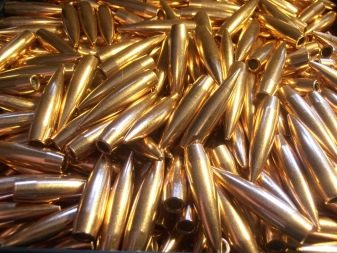
One of the varieties of metal, called semi-compact... It differs from tombac in the percentage of zinc, which can be in the range of 10–20%. This feature explains the change in the basic properties of the metal:
- rich yellow color;
- decrease in plasticity;
- increased refractoriness.
Such characteristics make it possible to use a semi-compact for production of some technical details. This type of metal is less common than tombac. This is due to the presence of a large number of disadvantages due to the high content of zinc in it.



Composition and properties
Tompac - it is an alloy that contains zinc and copper, and this allows us to call it a kind of brass. The composition of this compound can vary greatly:
- the percentage of copper can vary from 88 to 97%;
- the percentage of zinc should be no more than 10%.
Many properties, including strength and color, are determined by the concentration of zinc... With an increase in the content of the latter, the color changes from red to a delicate shade of yellow, which is as close as possible to gold. Also in this case, a number of metal characteristics change:
- increasing antifriction properties;
- improvement of chemical and technological features;
- lower alloy cost (compared to copper).
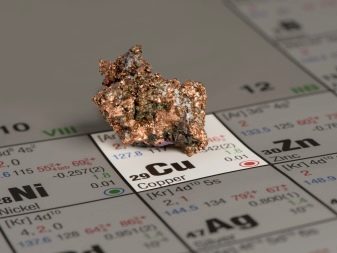

Tompac has a number of distinctive features:
- hardness is about 146 MPa;
- the melting point is at 10450 degrees;
- the friction coefficient in the absence of lubrication is 0.44, and with the addition of lubricants, this indicator decreases to 0.074;
- tensile strength in the range of 445-525 MPa;
- elongation after rupture - 3%;
- density - 8780 kg / m3.
The described parameters of the tombac can be improved by adding various components in not very large quantities. Thus, it is possible to obtain alloys with an optimal combination of the main characteristics. This metal is produced in the form of sheets or bars. The metal is marked by which you can determine its chemical composition. For example, the presence of the letter "L" indicates that it is brass. By the numbers, you can determine the amount of copper.
In addition to copper and zinc, it also includes other impurities; their presence and quantity can be found in specialized tables.
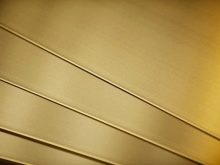

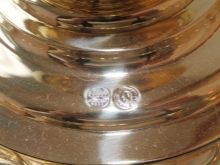
Applications
Tombak is widely used in various spheres of human activity. Here are the most demanded areas.
- Manufacture of jewelry, ornaments, interior items and kitchen utensils... Tompac is prized in this area primarily as a material that imitates gold. Noble color, pliability and high decorativeness make it an excellent solution for such purposes.
- Tableware production especially important in the countries of Central Asia, since here such household items are valued and held in high esteem. Brass does not tolerate contact with liquids, therefore, dishes made from the raw materials in question are necessarily tinned - a technology in which a thin layer of tin is applied to the thing.
- The modern industry also actively uses tombak. They make of it wire for various purposes.
- Creation technical details carried out in various ways. The most commonly used method is based on the principle of mechanical removal of material from the surface. For processing, special turning and milling machines are used. Due to the high relevance of this technology, many tombac blanks began to appear.
- There are a large number of organizations whose production activities are aimed at for the manufacture of rolled products. The metal in this form is processed on turning equipment.The rolled tombak has different diameters, which cannot be said about the length and basic properties, which are standardized characteristics. Such features make it easy to select the necessary workpiece for future production.
The scope of use of the metal largely depends on the indicators of resistance to the effects of corrosion phenomena.

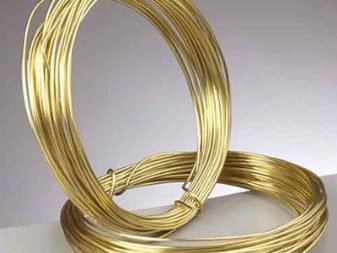
Production methods
Methods for producing tombac have expanded significantly since its discovery, but the essence of each of them boils down to a single scheme.
- The composition is heated in an electric furnace to 1300-1400 degrees. With such heating, silicate is released, floating on the surface of the alloy, which allows it to be removed from there without unnecessary difficulties.
- The resulting metal is poured into a container and purged with oxygen. This stage requires the use of special equipment. Such processing provokes the release of thermal energy in large quantities and triggers a chemical reaction.
- At this stage, copper is formed, which contains many foreign impurities, which reduces its properties.
- The composition is electrically refined using acidified copper sulfate.
- Zinc is introduced into molten copper, which makes it possible to obtain a strong alloy with high corrosion resistance.
The process of obtaining a tombak is complex, labor-intensive and energy-consuming. This explains the high cost of the metal, which is still much lower than the price of gold.
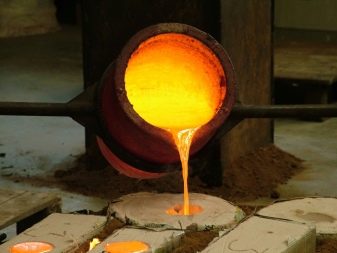

How to remove the oxide layer?
Red brass resistant to corrosion, which is its important advantage. But one of the main disadvantages is tendency to the appearance of an oxide film. The result of this reaction is the darkening of the surface of the products.
The rate of formation of the oxide layer is influenced by the frequency of contact with water. The surface with a layer of oxide does not look very attractive, therefore it is necessary to periodically remove the darkening. There are several simple and effective ways to do this.

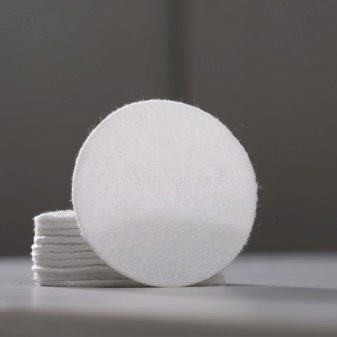
But before using them, it is necessary to check the product for authenticity, for this you need to use an ordinary magnet: the tombak, as it has already become known, will not be attracted to it.
- Soap you can quite effectively return the former shine and beauty to brass household items and jewelry. To do this, you need to make a solution of grated soap and water. You will also need acetone, cotton wool / cotton pad is moistened in it, after which the product is wiped with it. It is then washed in a mixture of soap. Such actions will restore the beauty of the noble metal.
- By using vinegar and salt you can also restore the former beauty of your favorite product. In a three-liter container, you need to dissolve 25 grams of salt and about 250 ml of vinegar, they are in every kitchen. In the resulting composition, we boil the product from the metal in question until it shines as before. The result will not be long in coming.
- Oxalic acid also helps in removing tarnishing from tombac products. For this method, you need to use personal protective equipment (respirator and gloves), since oxalic acid in concentrated form is dangerous to humans. It is required to dilute 170-220 ml of acid in ten liters of water. A darkened product is lowered into the resulting solution and left there for a couple of hours.
- Lemon and salt Is a less dangerous method, but it will take some effort and time to implement. The essence of the method is as follows: dip a half of a lemon in salt and rub the darkened surface.
Tombac products can be made to shine even more after cleansing. For this, the surfaces are polished with a toothpaste.
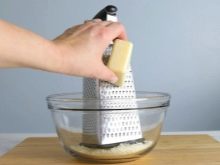
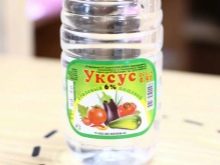
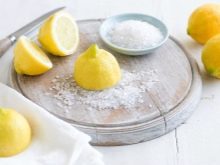
Check out the next video for more information on this amazing metal.








